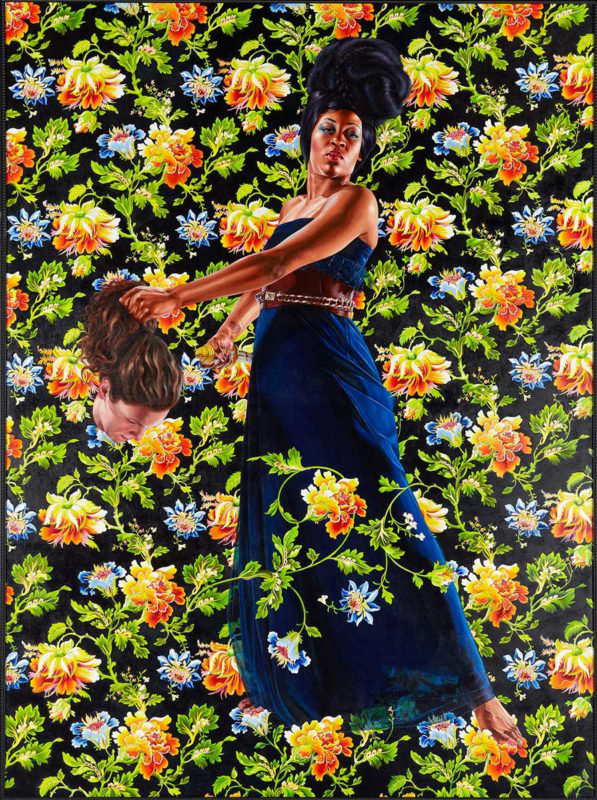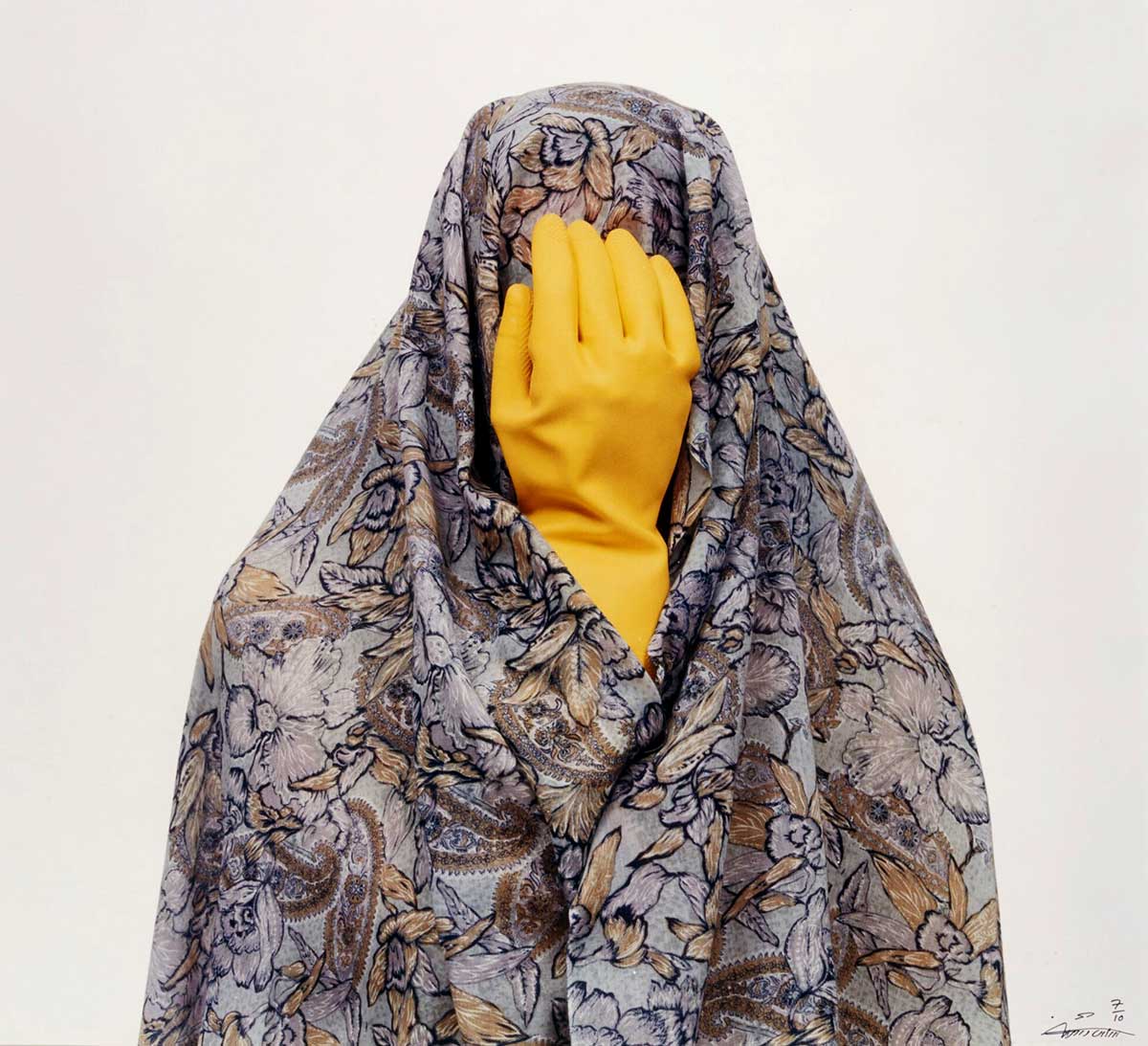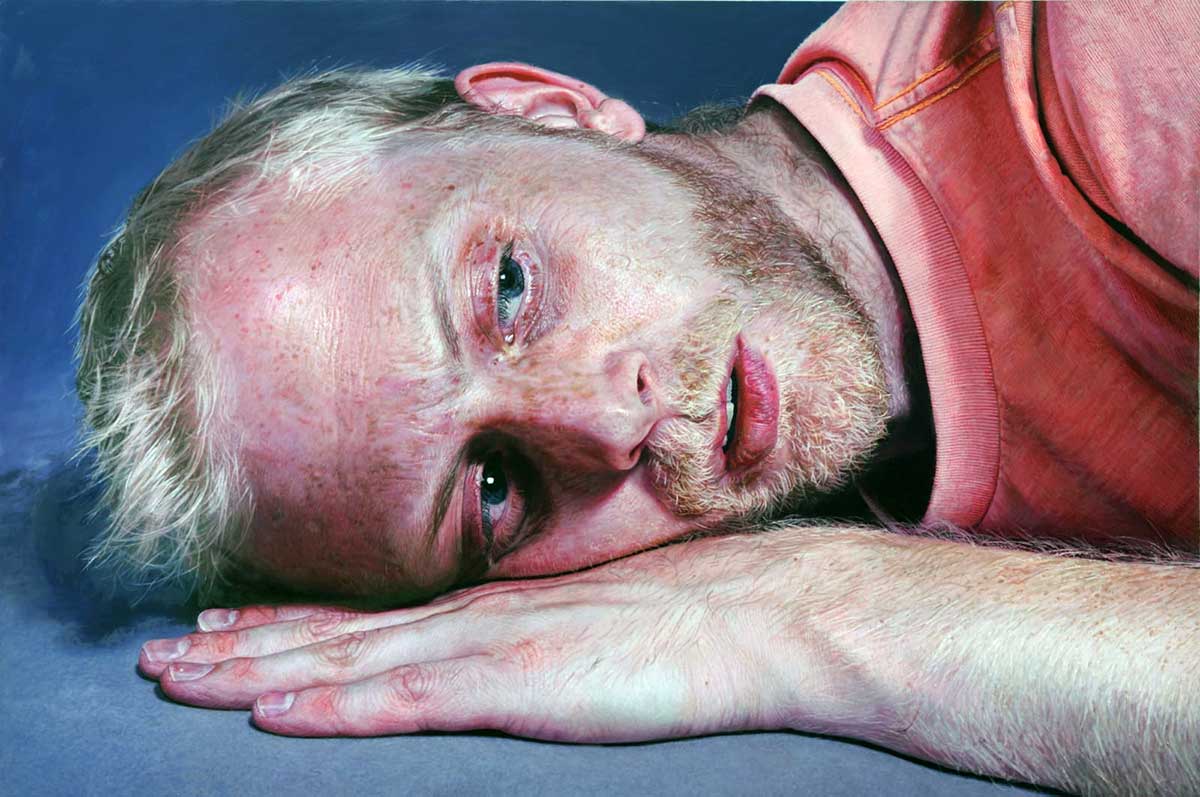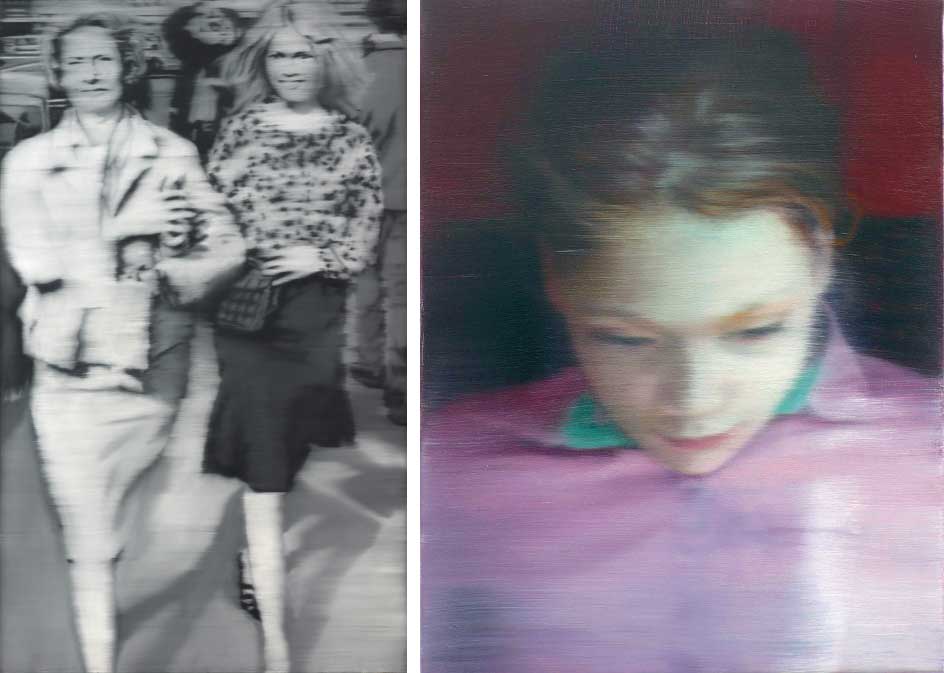
The photographer and gallerist Alfred Stieglitz believed that portraiture painting would become obsolete throughout the beginning of the 20th century. He asserted that by the time “photographers will have learned something about portraiture in its deeper sense…”, the mastery of painting portraits would no longer be pursued by artists. However, history proved him wrong. In the 1980s and ’90s, painters began to re-discover figuration, pushing the age-old portrait genre in new directions.

Today, the genre is still full of potential. How we see ourselves and each other in an age of exponential media exposure has become one of the most prevailing questions in contemporary art – and portraiture has offered a surprisingly refreshing approach to find answers.
Here are 9 of the most exciting contemporary portraiture artists from all around the world.
Elizabeth Peyton: Introducing Portraiture To The 21st Century
American artist Elizabeth Peyton was a leader in contemporary painting’s return to figuration in the 1990s and into the 21st century. Her portraits of art-world figures and celebrities explore youth, fame, and beauty. The paintings are modest and profound at the same time. By creating a sense of intimacy, Peyton allows the viewer to get a better understanding of his or her longings, deceptions, and fears, which are subtly reflected in the portrayed subjects. Her portraits are connected with the culture of late-20th-century America. She has painted Kurt Cobain, Lady Diana, and Noel Gallagher, among others.
Get the latest articles delivered to your inbox
Sign up to our Free Weekly Newsletter

Peyton would usually not know the people she was depicting personally. She would use images from magazines, books, CD covers, and music video skills as templates for her portraits. What would matter to her is the person’s life path and how inspiring it is for others.
Peyton has been living and teaching in Germany for more than five years. In 2017, her portrait of German chancellor Angela Merkel appeared on the cover of the US Vogue, depicting her as a powerful, yet very human and approachable person.
Kehinde Wiley: Contemporary Subjects, Classical Techniques
Half-Nigerian, half-Afro-American artist Kehinde Wiley works exclusively in portraiture. He is known for employing the compositional style and precision of Old Masters to uplift his traditionally marginalized black subjects. He would use colorful backgrounds that are inspired by leafy patterns or by motives as found on traditional textiles. Because he combines classical techniques with an eye-catching, modern style, Wiley’s work is also known as Bling-Bling baroque. In one famous example, Wiley depicted Michael Jackson as King Philip II in the classical style of an equestrian portrait.

In Judith and Holofernes, he painted the female protagonist as a black person holding a white-skinned head in her hand. Wiley painted his version of one of the most popular motifs in art history to send a signal against the white supremacist movement. However, Wiley’s primary aim is not to cause controversy and provocation. His portraying of juxtapositions rather stems from his desire to complicate notions of group identity.

In 2018, he painted President Barack Obama for the Smithsonian National Portrait Gallery, together with his artist-colleague Amy Sherald who portrayed The First Lady, Michelle Obama.
Amy Sherald: New American Realism
Painter Amy Sherald was, together with Kehinde Wiley, the first black artist to contribute an official presidential portrait for the National Portrait Gallery in Washington D.C. Furthermore, she was the first Afro-American woman to ever paint the First Lady.

Throughout her career, Sherald has mainly tried to explore topics revolving around identity and heritage. She uses portraiture to create unexpected stories that aim to re-position black legacy in the history of American art. “I’m painting the paintings that I want to see in museums,” she said, “I want to see something else than just a black body on a canvas”. Sherald is best known for creating ‘stylized realism,’ in which her subjects are depicted as vibrantly dressed individuals rendered in grayscale skin tones against highly-saturated backgrounds.

Shadi Ghadirian: Women, Culture And Identity In Portraiture
Born in Tehran, Shadi Ghadirian is a contemporary photographer exploring the role of women in a 21st-century society that seems to be forever stuck between tradition and modernity. Her portraiture focuses on contradictions that exist in everyday life, in religion, in censorship, and the status of women. She is famous for combining old photography techniques with modern mixed media approaches to underline the complexity of Iranian society and its history. Ghadirian gained international recognition through the series Qajar and Like Every Day in 1998 and 2001, respectively.

In her striking series Be Colourful (2002), she portrayed women in Iran, showing them obscured by layers of glass and paint, alluding to the traditional mirror work of the Qajar dynasty.

Craig Wylie: Hyperrealism In 21st Century Painting
Craig Wylie‘s work seeks to exploit the potential of still-life and figure painting in the 21st century. Most famous for his hyperreal portraiture, the Zimbabwe-born artist is mainly concerned with color and texture. He draws everything from reality but selects and rearranges his subjects in the light of his very specific intentions. Wylie’s art is meticulously thought out and, in its way, very intellectual.

While he would carefully plan and execute his work, the result always conveys some sort of spontaneity. The artist claims not to use any photographs as templates for his portraiture, except for as a sort of sketchbook. Hence, the precise reproduction of one photograph in paint has never been part of his plan. We must therefore see Wylie as an artist who thinks deeply and effectively about his art.

One of his paintings – a portrait of Kelly Holmes, an Olympian middle distance runner – forms part of the primary collection of the National Portrait Gallery in the UK.
Lucian Freud: Breaking Figural Standards
Sigmund Freud’s grandson is one of the most important figures in 20th-century portraiture. His oeuvre has paved the way for many contemporary figurative artists, particularly because of his talent for depicting sitters as if they were completely unobserved. With his naked portraits, Freud broke the conventional standards of his time. He achieved to convey a sense of complete intimacy, his nudes coming across as some sort of spontaneous snapshots.

Benefits Supervisor Sleeping, one of the four portraits in which he depicted Sue Tilley, a British model weighing approximately 125 kg, was auctioned in May 2008 as the most expensive painting by a living artist.

In 2001, on the occasion of the Queen’s Crown Jubilee, he painted a portrait of Queen Elizabeth II, which was shown in the 2002 Jubilee Exhibition in the British National Portrait Gallery and which forms now part of the royal collection.
Gerhard Richter: Distortions Of Realism
Gerhard Richter is widely regarded as one of the world’s leading contemporary artists. During a career spanning almost fifty years, the German artist has created an astonishing and diverse range of work, including portraiture. In 1962, Richter began to make black and white portraits copied from found photographs, such as Mutter und Tochter, and depictions of close members of the artist’s family such as Betty.

Even if he depends heavily on photography, Richter’s work cannot be understood as photorealistic art. As a painter, he is rather interested in deceiving the viewer. He paints photographs to expose the typical distortions of reality when it is reproduced by technology. His attitude towards portraiture is unconventional to the extent that he is not really interested in depicting anything of the sitter’s soul or personality. Richter is mainly concerned to explore topics revolving around reality and appearance. So, by obscuring the identities of the depicted subjects and by distorting machine-made reality through painting, his portraits provide a fascinating insight into the way we view the world.
Georg Baselitz: Turning Portraiture On Its Head
He is probably one of the most controversial contemporary artists, continuing into the 21st century. Georg Baselitz, whose real name is Hans-Georg Kern, was born in East Germany where he was kicked out from art school because of his supposedly immature world views. A rebel since his very beginnings, he refused to follow any ideology or doctrine. One of his first exhibitions took place in West Germany in 1963, and two of his paintings, Der Nackte Mann (The Naked Man) and Die Grosse Nacht im Eimer (The Big Night Down the Drain) were consequently confiscated. Both paintings depicted a figure with a huge penis, which triggered an immense scandal. However, this incident ultimately put him on the world stage, where he would later become known for his upside-down portraiture. He would paint his wife Elke and his friends Franz Dahlem and Michael Werner among others.

Baselitz would closely follow the classical ideals of portraiture – with the sole exception of painting his portraits upside-down. With this simple trick, Baselitz succeeded in creating an image that is freed from its motif. “People often think that Baselitz has painted the painting in the normal way and then turned it upside-down, but that is not the case.”, said Martin Schwander, the co-curator of Baselitz’ big retrospective in 2018.
In 2015, Baselitz painted a series of reverse self-portraits for the Venice Biennale in which he explored his own experience of aging.

Jemima Kirke: Portraiture Of Women, Daughters, And Motherhood
Jemima Kirke is probably better known as an actress. She played the role of rebel Jessa in Lena Dunham’s popular TV series Girls. However, the British artist also has a remarkable, though still young career as a painter. In fact, Kirke has always considered herself primarily an artist – refraining from differentiating between her acting and her painting. She graduated from the Rhode Island School of Design in 2008 and in 2017, she had her first solo exhibition at New York’s Sargent’s Daughters. With the portraits shown at the gallery, she tried to question the significance of the institution of marriage across different cultures.

The brides Kirke depicted look rather isolated and earnest, if not even sad. One work in the show was a self-portrait that she painted before she was divorced. Hence, Kirke’s own experience of separation heavily influenced the paintings she created during that time.
Her topics mainly revolve around womanhood and motherhood, with children and nudity being two recurring motifs of her work. The brutal honesty with which she depicts her subjects, reflected in their large eyes, evokes a profound sense of intimacy. Kirke’s fascination for portraiture somehow came to her unexpectedly as she told W Magazine. And most probably, that fascination will not let go of her any time soon: “I’m like, If I have a stranger in my room I get to study, why would I want to paint flowers or myself?”








